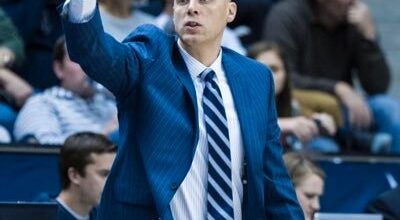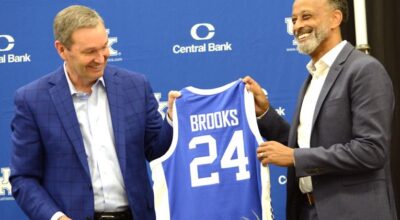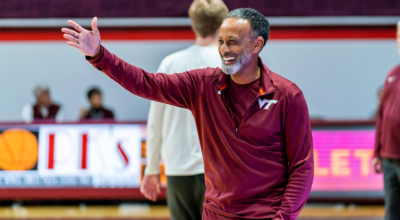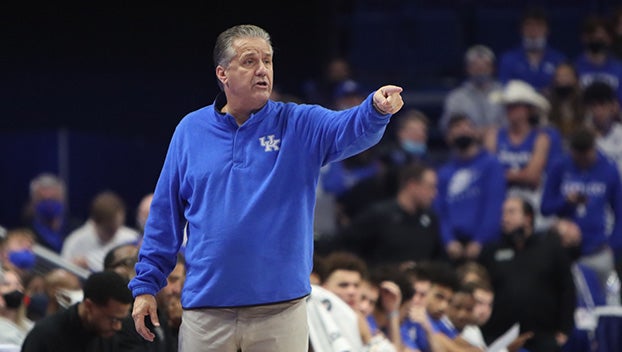Deserved recognition coming for four barrier-breaking UK football players
Published 9:29 am Thursday, September 14, 2017
By LARRY VAUGHT
Sometimes it’s hard to figure out what stories create a national buzz and which ones do not.
University of Kentucky officials waited 50 years to erect a statue honoring four African-American players who broke the color barrier in the Southeastern Conference 50 years ago. Every athlete in every SEC sport was white until the fall of 1967 when Nate Northington played for UK in a football game against Ole Miss. Nord and UK teammates Greg Page, Houston Hogg and Wilbur Hackett changed the scope of athletics in the South.
After failing to do anything drastic to draw attention to that story, UK commissioned a statue of the four that now stands outside Kroger Field and near the Kentucky football practice facility. But with all the national frenzy about the demand to take down or move Confederate statues, including those in Lexington, the story about a statue that went up to honor racial integration in the SEC has had only limited national play.
So why has this recognition at UK not caused even more of a national buzz?
“I think that is the University of Kentucky’s job. Who would not want to latch on to this lightning rod of goodwill? It’s public relations. They (UK) are doing what they think they can but they can do more. But they built the statue, so we really can’t complain. We are thrilled that was done,” said Paul Karem, a former UK teammate of the four African-American players. “These guys are heroes and hopefully our film will show that and educate a lot about what they had to endure to be the leaders in integration in the SEC. It’s a remarkable story of courage.”
Academy Award-winning filmmaker Paul Wagner wanted to tell this story of the four UK pioneers and has in a documentary, “Black in Blue.” The current UK football team will get a preview of the movie before the season ends.
“We could have premiered the movie in September due to our great sponsors in Louisville Gas & Electric, Woodford Reserve and Brown-Foreman,” Karem said. “We opted not to premier the film on the SEC Network, ESPN, possibly Disney, or a lot of education channels in the south. We opted not to do that because our Academy Award winning filmmaker Paul Wagner thinks it good enough — and he has won awards — to take to the major film festivals next year.
“The great part about that is that what a blast of goodwill in this time of statue hysteria to talk about the whole story and shed light on Kentucky and the university when we were so unfairly portrayed in the Texas Western story (when an all white UK basketball team lost to an all black Texas Western in the 1966 national title game). It was a great historical event but Nate and Greg signed letters of intent to play football at UK before that (championship) game was played. We are somewhat better than some people have portrayed the university.”
Karem, a former quarterback, was the driving force behind the statue and movie. He helped put together a petition in 2012 signed by the Bradshaw Boys — players that played for coach Charlie Bradshaw at UK — asking for recognition for their former teammates who endured harassment and discrimination but stayed the course at UK.
SEC commissioner Greg Sankey plans to honor Northington, Hackett and Hogg at the SEC Championship Game in December along with members of Page’s family. Page was injured in practice, laid paralyzed in a hospital room for 38 days and died the day before Northington became the first African-American to play in a SEC game. The UK players were not in favor of even playing the game but did because Page’s parents wanted the game to still be played.
Northington transferred just a few weeks after breaking the color barrier because of his grief over Page’s death but encouraged Hackett and Hogg to stay the course. Hackett later became the first African-American team captain in any sport in the SEC. He also was a football official in the SEC for years.
Northington, Hogg and Hackett — and Page’s family — wanted the statue to be about telling the story of integration more than as an honor for them. Karem said his former teammates remain “fairly swept away” by the statue they hope will help unite fans of any race.
“But however it is that they feel, they are the perfect guys to feel it,” Karem said. “This thing was laying dead in the water for 50 years. I think the Lord works in mysterious ways. If this had been done 30 years ago, I am not sure it would have been this impactful. I am not sure it would be what it is.
“Now 50 years later … I don’t know what it is like to be an African-American but I have learned a lot from Wilbur and the guys. I just don’t think it could have had a better impact than right now for a lot of strange reasons.”
Before every UK home football game, fans can be seen not only looking at the statue, but stopping to take pictures.
Karem knows his former teammates faced racism with courage and helped change history. He can tell story after story of the discrimination they endured. He can tell of a time a restaurant refused to serve them during a UK road trip and every UK player walked out of the establishment. Karem remembers the verbal taunts his teammates heard during games and how they never lost their poise.
“They were great players, but they were great ambassadors for Kentucky football, too,” Karem said. “They changed history. How many people have ever done that? We had four on the football team at Kentucky and even if it took 50 years, I am glad they are finally get the recognition they deserve.”






